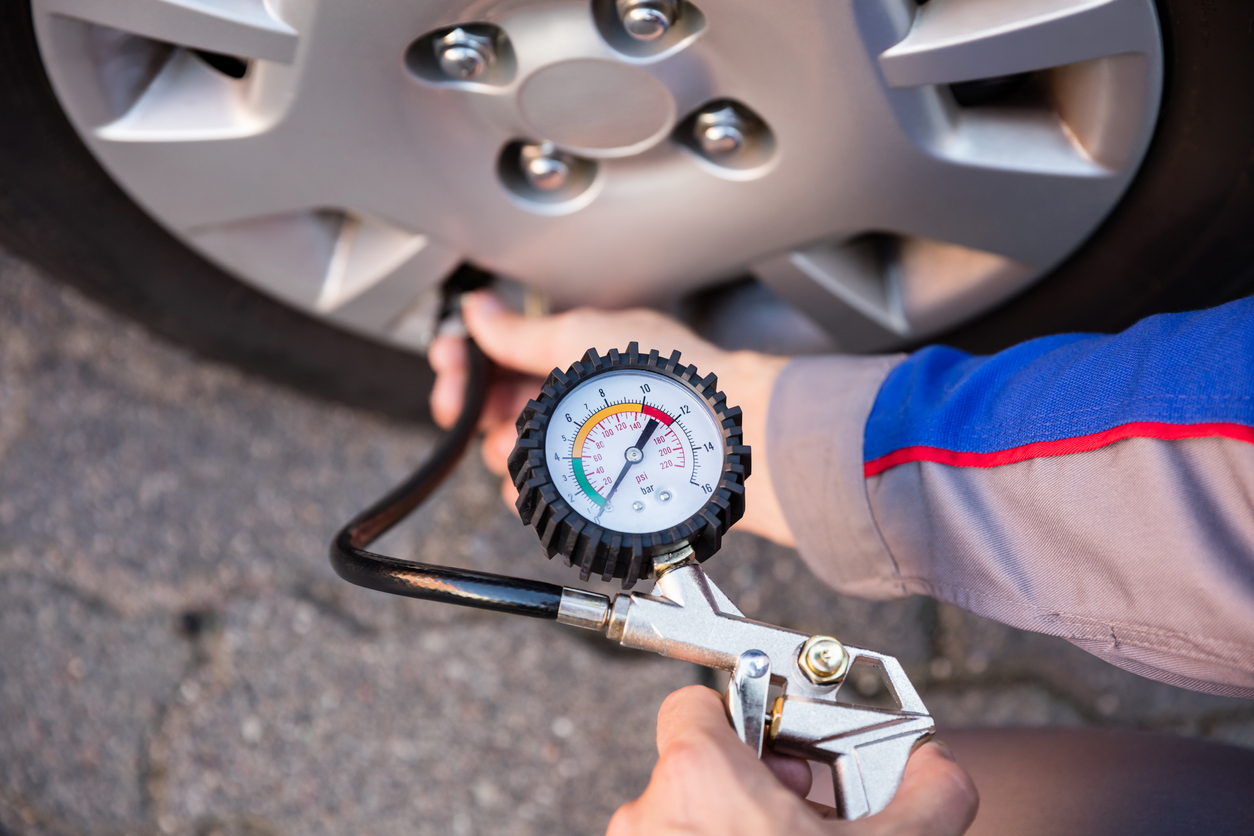It's important to maintain the correct air pressure for winter tyres to ensure that the tyres retain optimal grip even in winter conditions. As a rule, tyre pressure for winter tyres should be slightly higher than for summer tyres.
It's important to check tyre pressure regularly and adjust it if necessary to ensure your tyres are suitable for safe driving. Find out more in the following guide and always drive with the ideal tyre pressure in the future.
Tyre pressure is too low if it is below the car manufacturer's recommended pressure. The recommended tyre pressure is usually listed in the car's owner's manual or on the inside of the driver's door. The unit of measurement for tyre pressure is bar or PSI (pound-force per square inch).
Winter tyres usually have higher air pressure because they are designed for lower temperatures. This is because as the temperature drops, so does the air pressure in the tyres. This can cause the tyre to lose grip. This can make it harder to steer your car - it can even become unstable on the road.
But low tyre pressure can also lead to increased tyre wear, and braking distances can also increase significantly. By increasing the air pressure in your winter tyres, you can ensure they perform at their best even in low temperatures and provide good grip on the road.
Caution: Although tyre pressure for winter tyres should usually be slightly higher than for summer tyres, it's important to make sure it's not too high. Over-inflation can reduce tyre grip and reduce driving safety.
Check your tyre pressure regularly, preferably every 14 days. Tyre pressure can change over time, especially in cold weather. To check tyre pressure on winter tyres, you first need a tyre pressure gauge. You can buy one either at your local car dealer or at a petrol station - sometimes you can even get it for free. Then proceed as follows:
Check tyre pressure on winter tyres:

Even if you have a tyre pressure monitoring system (TPMS), you should regularly check the air pressure yourself. TPMS systems are not always reliable and can indicate faults.
A winter tyre should always have sufficient tread depth for safe driving on winter roads. You can read how to measure tread depth correctly here. In Germany, the minimum tread depth for winter tyres is 1.6 millimetres. However, this only applies to the primary grooves in the tread. If the transverse grooves of the tyre have already become shallower, the tyres should be replaced.
However, it is generally recommended to change your tyres earlier, when the tread depth falls below 4 millimetres. This way, you can ensure that your tyres also have sufficient grip in winter.
In our shop you will find a large selection of winter tyres from many well-known manufacturers - for example Michelin winter tyres, Dunlop winter tyres or Pirelli winter tyres. Use our simple search function and have your new winter tyres delivered free of charge and quickly to your home or the nearest partner workshop.